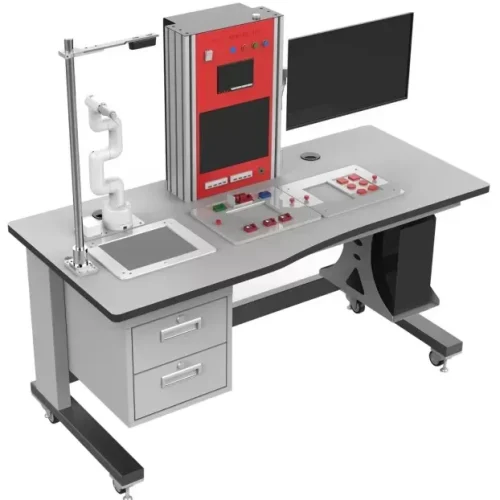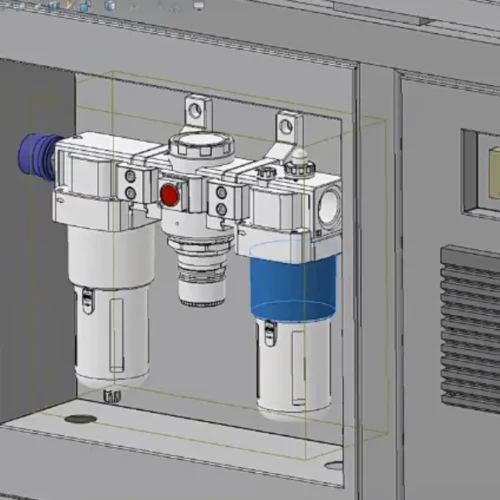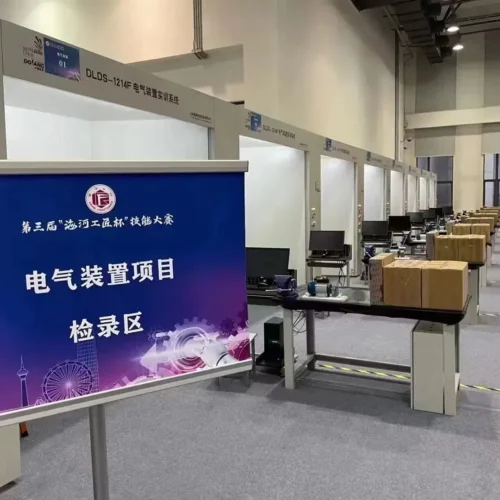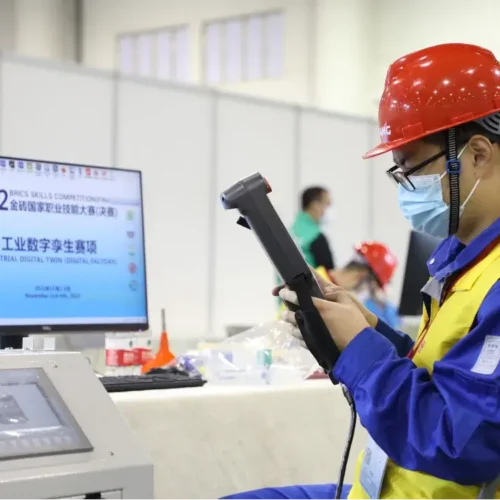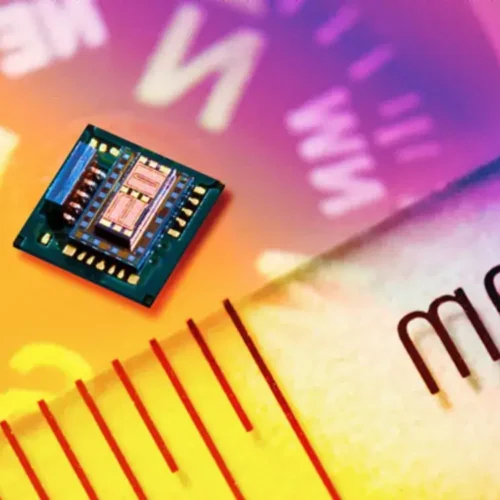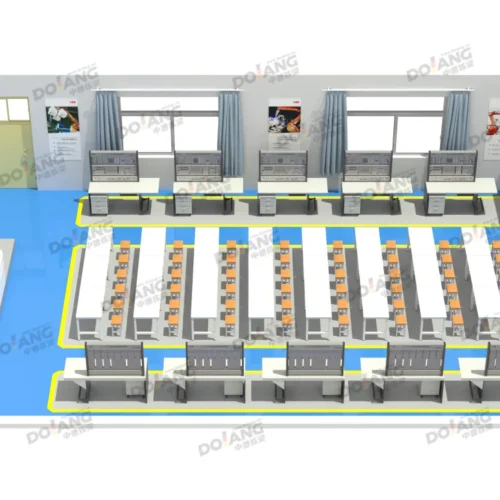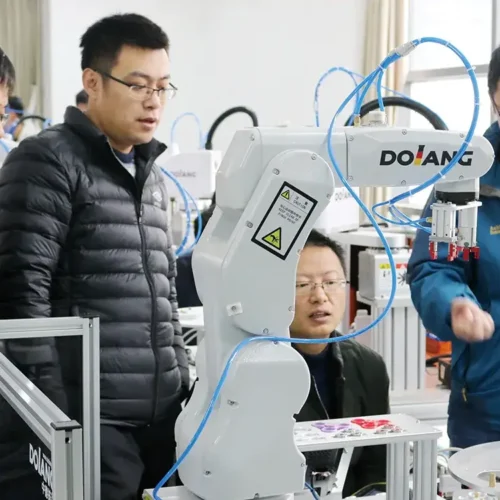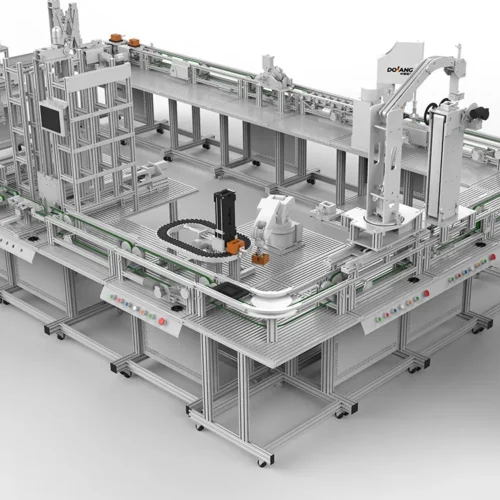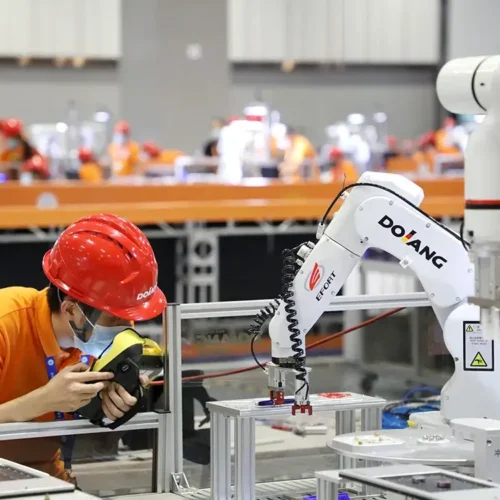sWe are living in an age of technology. Now electronic devices have become an essential part of our daily life. We can’t imagine a day without smartphones, laptops, self-driving cars, and smart homes. But, no electronic devices are trouble-free. Trouble arises during electronic device use. So, the demand for skilled professionals in this field is very high. So this electronic training comes into play.

What is electronic training? Electronics training is a learning program focused on electronic item repair. It discusses circuit design, component functions, and repair techniques. Electronics training is to teach designing, fixing, and taking care of electronic devices.
Suppose you’re interested in learning about electronic gadgets’ functioning and repair. This training might be the perfect training for you. You can start a career as an electronic technician by completing the training.
There are different types of electronics training. This training needs many training equipment. In this article, we will learn about electronics training and training equipment. So let’s get started.
Types of Electronic Training:
At present, there are different categories of electronic training. The following are the most popular electronic training provided by various institutions.
- Electronic Board Repair Training
- Electronic Circuit Training
- Electronic Design Training
- Electronic Repair Training
- Electronic Tech Training
- Electronic Troubleshooting Training
- Electronics Vocational Training
- Power Electronics Training
- Electronics Technician Training
- Industrial Electronics Training
- Electronic Assessment Training
Now we turn to electronics training details.
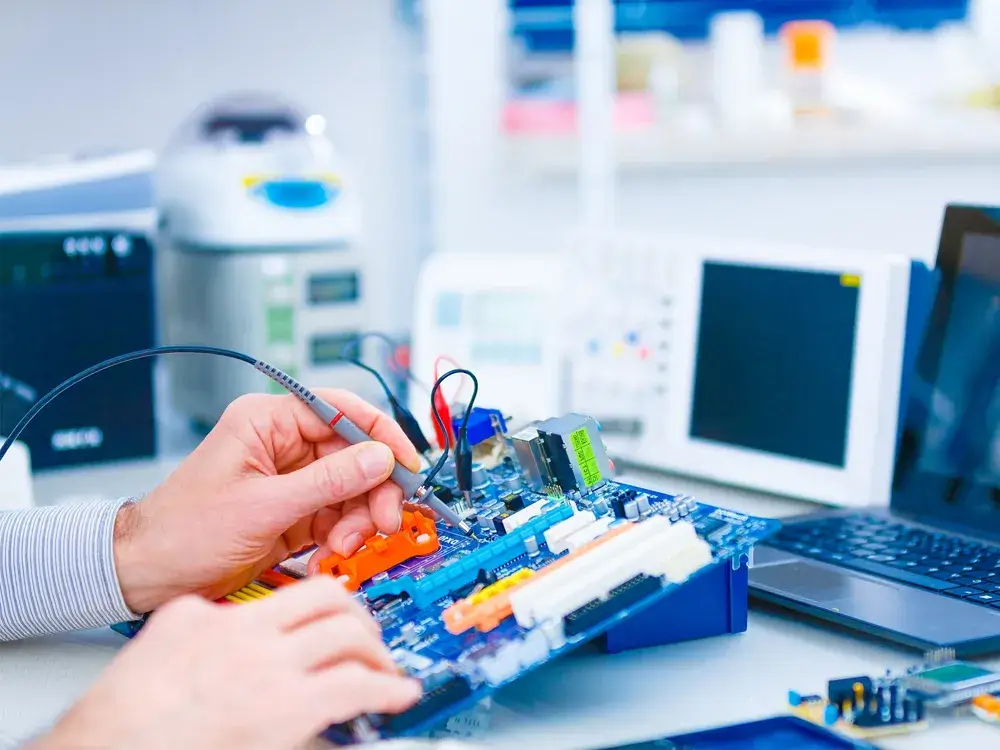
Electronic Board Repair Training:
Electronic boards are the core elements of electronic accessories. So, electronic board repair training is an essential electronic training program. It teaches the necessary skill for the repair and maintenance of electronic boards.
Electronic board troubleshooting and repair are also vital for electronic technicians. It helps to understand electronic boards and their functioning. It covers soldering, desoldering, surface mount technology, and circuit board restoration.
In electronic board repair training, technicians use a lot of equipment. The most common electronic board training equipment are:
- multimeter,
- soldering iron,
- solder,
- desolders
- hot air guns,
- tweezers, magnifying glasses, etc.
But, the tools and equipment used can vary due to the board type. It also depends on the level of repairing complexities.
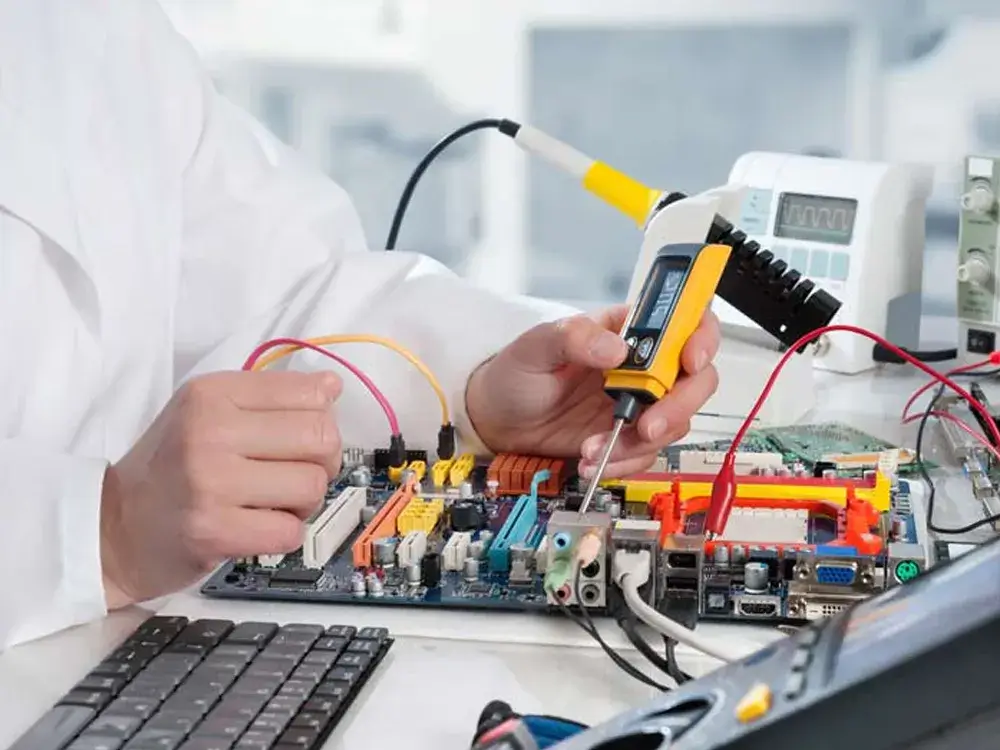
Electronic Circuit Training:
All electronic products have an electronic circuit. So the circuit is an element of any device. Electronic circuits are the basis of all electronic devices. The electronic circuit training teaches designing, analyzing, and fixing electronic circuits.
The essential elements of any circuit are resistors, capacitors, and transistors. These parts together make an electronic circuit to perform a specific task.
The electronic circuit training covers several important topics.
The most common topics are:
- Learning basic electrical principles
- Studying circuit analysis techniques
- Understanding component characteristics
- Getting hands-on experience with practical design
- Testing methods.
The training course aims to equip you with the skills to design and repair electronic items. Electronic circuit training has become very easy with the electronic Circuit trainer.
Electronic Design Training:
The electronic design training teaches you about the design and development of electronic devices. The course covers many topics in some specialized sessions.
The topics are design, schematic design, and printed circuit board (PCB) layout. Electronic design training students also learn the latest design software.
The trainers use different tools and software in electronic design training. Two necessary software are computer-aided design (CAD) software and simulation software.
Electronic design training is a must for anyone trying to start a career in the electronics industry technician.
It gives you an understanding of the design process, development, and troubleshooting.
Electronic Repair Training:
Electronic repair training is another major electronic training program. It focuses on repairing electronic devices.
The electronic repair training teaches you about diagnostic techniques and repair methods. It also practices with specialized tools. Technicians learn to diagnose, troubleshoot, and repair various electronic devices after the training.
The program provides the opportunity to develop technical skills and experience. It finally helps you to build a career in the era of electronic commodities repair.
Electronic Tech Training:
This training is an opportunity to be competent in electronic technology. Electronic tech training prepares learners with a broad understanding of electronic technology. They can handle any issues with electronic devices after completing the training.
Electronic Training Equipment:
Electronic training equipment is a specialized tool. Different electronic training programs use these tools to teach their students.
Electronic training equipment is vital for both students and experts. This equipment helps the trainers to provide the lesson for the apprentice.
The electronic training equipment helps technicians to see practical applications. This training enhances their understanding of the theory and practical tasks.
The most common electronic training equipment are:
- Electronic Circuit Trainer
- Power Electronics Trainer Kit
- Soldering Stations
- Oscilloscopes
- Multimeters
- Logic Analyzers
- Microcontroller kits.
Now let’s turn to the details of the above-mentioned electronic training equipment.
Electronic Circuit Trainer:
An electronic circuit trainer is a tool used in electronics training schemes. It assists trainees in the functioning of electronic circuits. The electronic circuit trainer is used to simulate real-life electronic circuits. It allows users to experiment with different circuit configurations and understand their functioning.
Electronic circuit trainers are excellent equipment for teaching vocational students. It benefits the technician by developing practical skills. These skills are necessary to design and overhaul electronic devices.
Educational institutions and technical training centers use electronic circuit trainers. It is to teach their students to gather knowledge of practical electronic device applications.

Power Electronics Trainer Kit:
A power electronics trainer kit is a tool to teach technicians. It teaches about the basic principles and applications of power electronics. It includes various power electronics apparatuses. The most common power electronic kits are diodes, rectifiers, and power supplies. Some applications of the power electronics trainer kit are as below:
- The power electronics circuit operates rectifiers, power supplies, and power conversion circuits.
- For studying the behavior of power electronics components under various operating conditions.
- For designing and testing simple power electronics circuits.
- For troubleshooting power electronics circuits and components
The kit aids the learners in developing technical skills on power electronic devices. It furthermore prepares them for further studies in this field.
Soldering stations:
A soldering station is a multipurpose instrument. It is for heating and melting a metal alloy (solder). The metal is for soldering metal parts and electronic components.
Electronic Training Oscilloscopes:
An oscilloscope is an electronic test equipment. It allows the technician to visualize electrical signals in a graphical form. The oscilloscope also shows signals as a two-dimensional plot.
Furthermore, an oscilloscope measures electrical signals’ voltage and time behavior. It shows the repetitive movements in a visible human style.
Power Supplies:
Power supplies mean to provide a stable source of power for electronic circuits. There are different power supplies. These are linear power supplies, switch-mode power supplies, and programmable power supplies.
Multimeter:
A multimeter is also an electronic measuring instrument. It measures many electrical properties, for example, voltage, current, resistance, and continuity.
Signal Generators:
Signal generators generate electrical signals like sine waves, square waves, and triangle waves. They are usually used to test and troubleshoot electronic circuits.
Breadboards:
The applications of breadboards are in electronics experimentation and prototyping. They provide a quick and easy way to build and test electronic circuits. It facilitates the test without soldering the components together.
Test probes:
Test probes are necessary for taking electrical measurements. They are used with oscilloscopes and multimeters to measure electrical signals. They come in many shapes and sizes. Two familiar types of test probes are passive and active type probes.
Electronic Training Methods:
Electronic training methods refer to the various ways to deliver electronics training. The training is for vocational students and technicians. Technicians can take the training in many ways:
- Formal education programs,
- Online courses,
- Workshops,
- or self-study.
The most popular electronics training methods is traditional classroom-based training. Online training and training under an expert are also popular in modern times.
Each of these methods has its advantages and disadvantages. It is suitable for different learners.
The classroom-based training provides the opportunity to learn from experienced instructors. It provides an organized learning environment.
Online training allows individuals to learn at their own pace at home. It is perfect for those who want comfort and ease. They can learn in their own homes.
Bottom Line:
Electronics training is vital for technicians. It teaches the ins and out of electronic items. The training teaches how to design, analyze, fix, and maintain electronic devices. It creates many opportunities for the technicians.
Electronics training provides the foundation you need to succeed as a technician. It is always effective whether you are trying to become an electronic repair technician or an electronic designer.
Electronics training is an excellent investment for your future. It opens a wide range of opportunities for learners.
The teaching and learning procedures of electronics training have become effortless nowadays. The different electronic training equipment made it easy.


